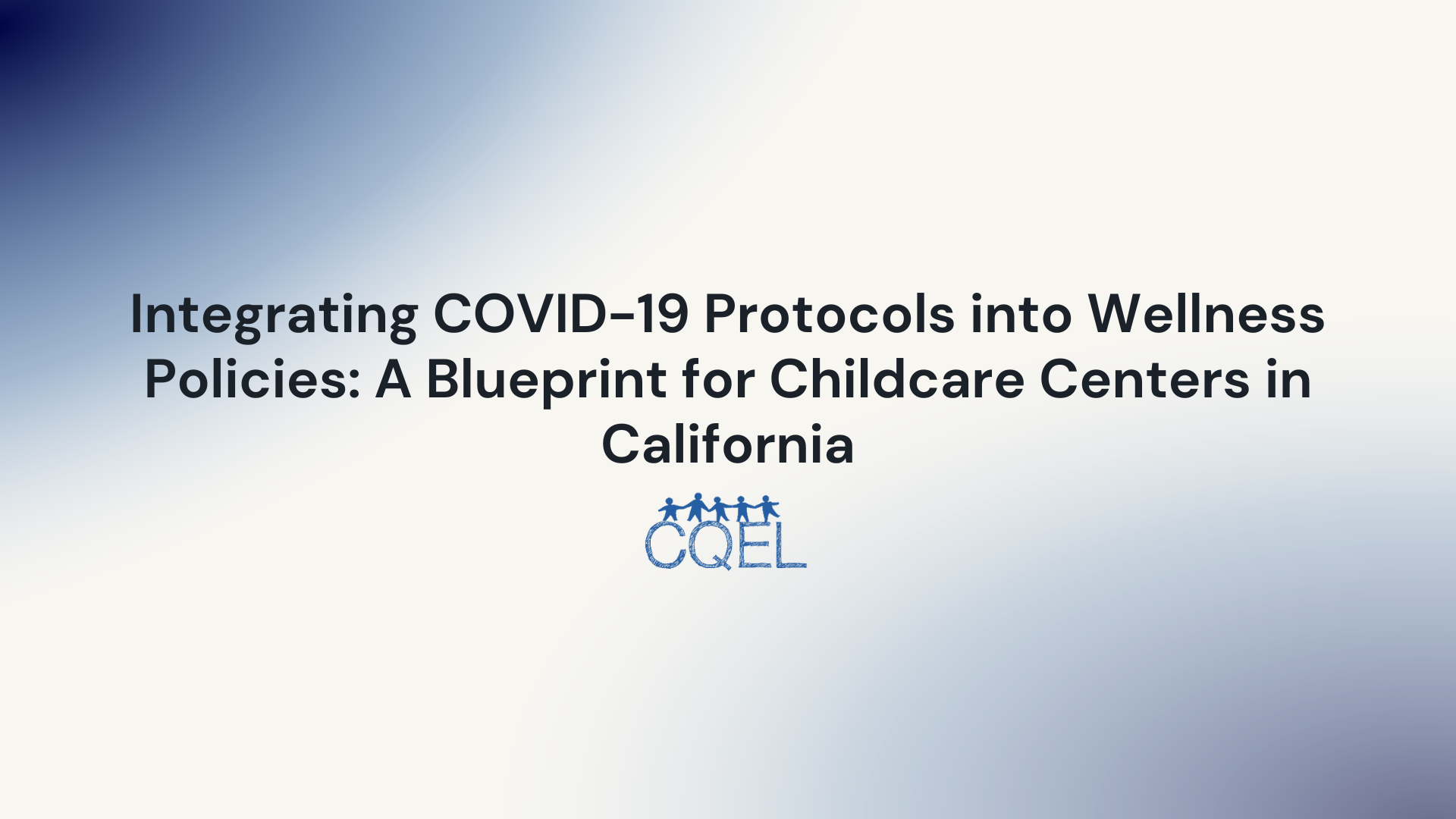Integrating COVID-19 Protocols into Wellness Policies: A Blueprint for Childcare Centers in California
In California, where diverse communities often mean varied infection rates, childcare centers must seamlessly integrate COVID-19 protocols into their wellness policies.

The COVID-19 pandemic has irreversibly altered how we approach public health and safety, especially within communal settings like childcare centers. As administrators, we're tasked with not only creating a nurturing environment for children but also one that diligently safeguards against the spread of the virus. In California, where diverse communities often mean varied infection rates, childcare centers must seamlessly integrate COVID-19 protocols into their wellness policies. In this blog, we'll delve into each important consideration and provide resources to aid your efforts.
Understanding the Expanding Role of a Wellness Policy
Traditionally, wellness policies in childcare centers encompassed nutrition education, physical activity guidelines, and emotional wellness practices. However, the pandemic's onset has forced us to expand our definition of wellness. A more holistic approach that embraces infection prevention has become the need of the hour. Consequently, COVID-19 protocols, which were once emergency measures, are now integral parts of our wellness guidelines.
Incorporating Regular Health Checks
Proactive health checks, including temperature screenings and symptom checks for staff, children, and any visitors, can become a potent line of defense against COVID-19. In your policy, detail how these checks will be conducted, who will administer them, how you will maintain the confidentiality of medical records, and the steps to be followed if an individual shows potential symptoms. For more insights, refer to the CDC's guidelines on health screenings in childcare programs.
Upgrading Sanitation and Hygiene Practices
In this new normal, wellness policies must explicitly specify the elevated standards of hygiene to be maintained at the center. Frequent handwashing, proper sanitizing of toys and learning materials, and regular disinfection of high-touch surfaces should be the minimum standard. It's equally important to educate the children about these practices in an age-appropriate manner. For disinfection procedures, the EPA's List N is an excellent guide to recommended products effective against COVID-19.
Managing Potential COVID-19 Cases
No one wants to face a potential or confirmed COVID-19 case at their center. However, preparedness can significantly mitigate the impact. Your wellness policy should provide a clear step-by-step protocol for isolation, notifying families and staff, reporting to local health departments, and subsequent disinfection procedures. The California Department of Public Health's guidance can help you formulate this crucial protocol.
Crafting a Sensible Mask Policy
Mandating mask use can be a complex issue, particularly with young children. When creating a mask policy, take into account the children's age, the local infection rates, and the physical layout and ventilation of your center. The American Academy of Pediatrics provides excellent guidelines on this aspect.
Modifying Activities for Social Distancing
Adhering to social distancing doesn't mean that fun learning activities need to stop. Your wellness policy should include creative ways to modify activities to maintain the recommended distance between children. This might involve small group rotations, changing room layouts, or altering certain routines. Check the CDC's guide on social distancing in childcare programs for useful ideas.
Provisioning for Remote Learning
In cases where children need to stay home, your center can still support their learning journey. Your wellness policy should delineate your approach towards remote learning and the resources you will provide to parents. For supporting remote learning, particularly for school-aged children, the California Department of Education is a comprehensive resource.
Elevating Communication with Parents and Families
Throughout these changes, maintaining an open, clear, and empathetic line of communication with families is of utmost importance. Your wellness policy should highlight how and when updates regarding COVID-19 protocols will be disseminated to parents.
Ensuring Staff Health and Well-being
The health and safety of your staff are paramount. Ensure your wellness policy covers their needs, from access to personal protective equipment (PPE), adoption of safe work practices, and mental health support. OSHA's Guidance on Preparing Workplaces for COVID-19 is an invaluable resource for this topic.
Embracing the Challenge, Shaping the Future
In crafting wellness policies that fuse traditional health practices and new COVID-19 protocols, we're essentially shaping the future of childcare. By doing so, we ensure that our centers not only remain resilient in the face of current challenges but also evolve to provide a safe, nurturing environment for our young ones. As we continue this journey, let's remember to learn from each other and work together for a safer, healthier future.
